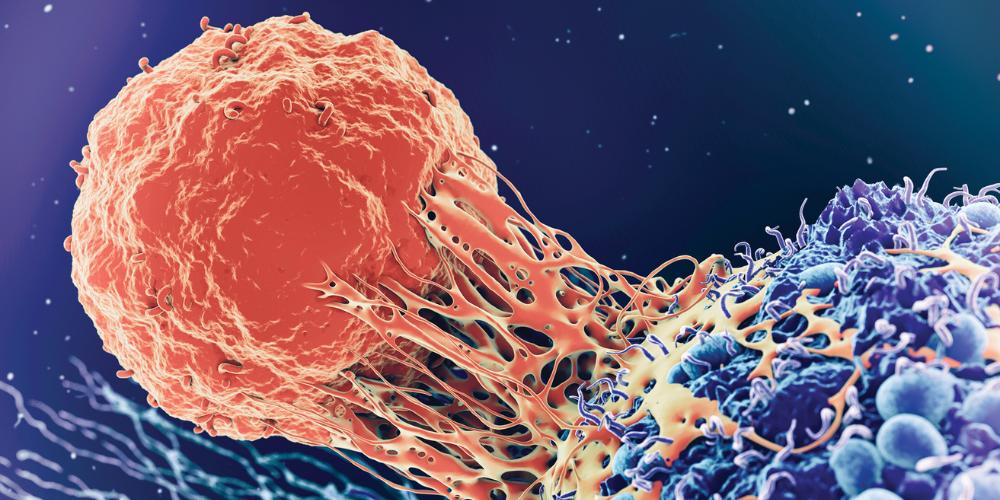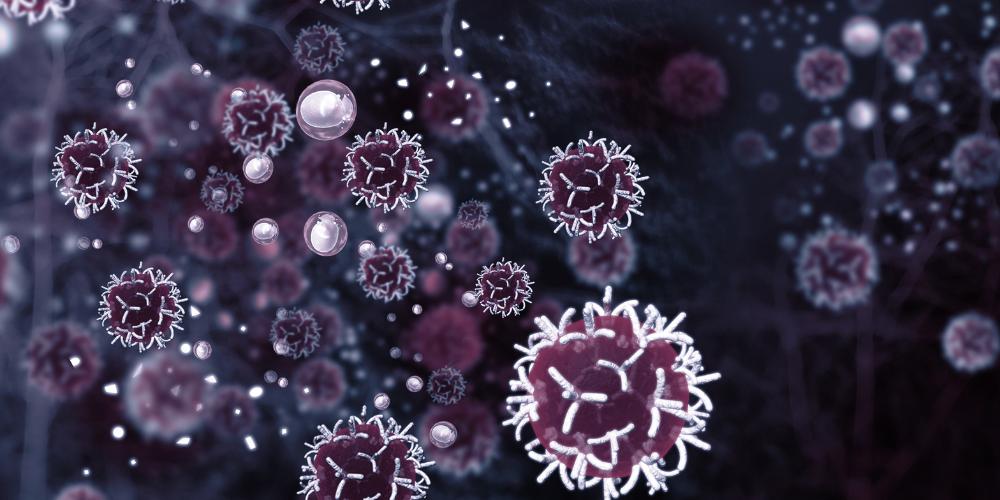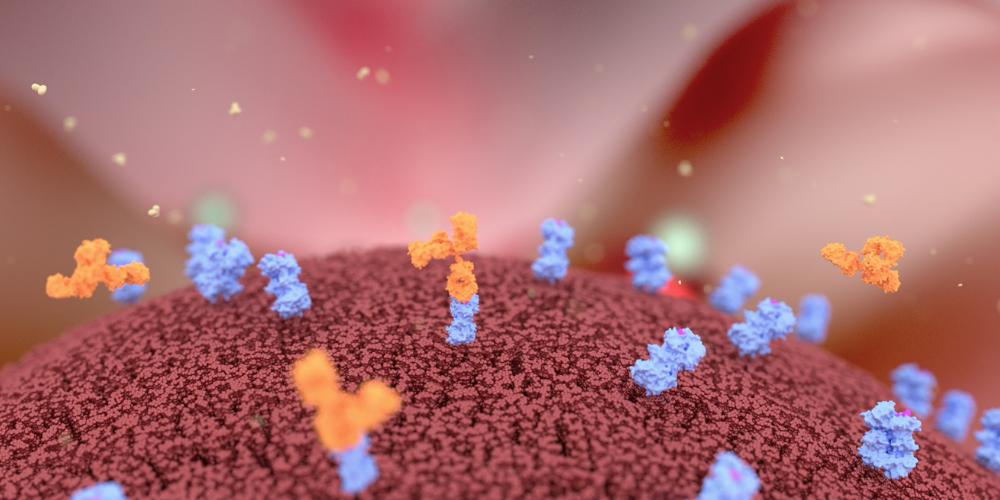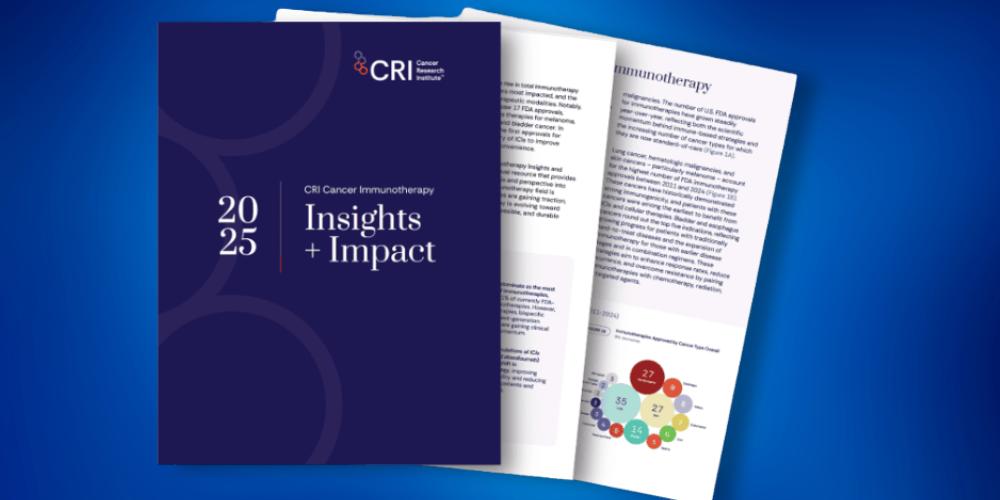Whole-Body Molecular Imaging’s Impact on Understanding Tumor Response and Advancing Immuno-Oncology (IO) Drug Development
Dr Gregory Frank talks about how the molecular imaging tracers in development at GE HealthCare are guiding drug development by providing researchers with a comprehensive look into T-cell presence and tumor response and heterogeneity.

What work are you leading in whole-body molecular imaging to help advance immuno-oncology drug development?
One facet of my role in scientific partnering and strategy is working with molecular imaging PET tracers in clinical development. Two tracers that are particularly relevant to an IO audience are CD8 and FAPI, which elucidate the anti-tumor T-cell response and map the tumor microenvironment (TME) in the body, respectively.
While CD8 and FAPI are still in clinical development, we’re making them available to pharma partners to utilize in their own clinical trials. While therapeutic and diagnostic developers often pursue the most direct regulatory path to market, this approach may overlook broader translational opportunities. By granting early access to these agents, we aim to facilitate exploratory applications beyond the primary development focus, potentially uncovering novel indications, optimizing patient stratification strategies, or informing combination therapy paradigms.
What is impactful about the CD8 tracer for assessing T-cell response?
The GE HealthCare CD8 imaging agent is a fluorine-18 labeled CD8-targeted PET tracer. It’s a nanobody, about 13 kilodaltons in size, and binds to CD8-alpha, which is a molecule expressed on cytotoxic T-cells. Those T-cells are among the most important effector cell types for anti-tumor immunity, and it’s very valuable to be able to see those cells in the body. Because the GE HealthCare CD8 PET tracer clears rapidly and binds very specifically, it potentially allows for same-day imaging similar to what a patient might receive with an FDG PET scan.
How does the FAPI tracer aid researchers in mapping tumor lesions?
In terms of immune exclusion, there is a very high likelihood that fibroblasts play a role and that the hostile immune environment induced by the tumor is mediated in part by those cancer-associated fibroblasts (CAFs).
FAPI is a molecule that binds to fibroblast activation protein (FAP) on CAFs and is an inhibitor of that enzyme (hence the term FAPI). FAP is normally expressed in wound healing, but can also be expressed in disease states such as cancer and some inflammatory diseases. In cancer, the FAPI-PET tracer specifically binds to FAP+ CAFs which are found within the TME and play a significant role in cancer progression.
What does whole-body molecular imaging offer over other modalities?
Whole-body imaging can provide a comprehensive analysis of a tumor response when compared to other modalities. CD8 imaging gives us information about all the tumors at the same time. I can use that information to go back and do an image-guided biopsy to the exact part of the tumor I want to query and figure out why it did or did not respond.
For comparison, a liquid biopsy is very convenient and powerful but gives a running average of what’s happening in a patient’s tumors. But if a patient has multiple tumors and if there is tumor heterogeneity, the immune response within each tumor may be different, and I can’t pinpoint which tumor is having the strongest response from a liquid biopsy. A needle biopsy, on the other hand, is phenomenal in providing detailed information, but about a single point in a single tumor. If I have a heterogenous tumor, I might biopsy the cold part of a tumor or the hot part, and I wouldn’t know without additional biopsies or other ways of figuring it out.
What do you anticipate to be the major challenges in using PET imaging in clinical trials?
The major hurdles that give most potential partners pause is availability and cost. The cost of conducting a single clinical trial may be exorbitant, and sponsors are increasingly required to balance financial feasibility with scientific ambition, often making strategic decisions about which trial components to fund and which to defer or exclude. Adding another modality like imaging requires asking yourself, “Is the value of this investment going to pay off, and what is that payoff?” Our belief is that with Molecular Imaging, sponsors can design a better trial with fewer patients and get a readout faster, which optimizes the overall investment.
Are there potential infrastructure challenges that would impede implementation into clinical use?
The infrastructure challenges are not as great as they used to be. For example, the GE HealthCare CD8 tracer is labeled with fluorine 18, which is the same isotope used in FDG PET. Any clinical site that can do an FDG PET scan can do a CD8 PET scan. The infrastructure, cyclotron and scanner are the same, and the labeling procedure is similar.
The GE HealthCare FAPI PET tracer is labeled with Gallium-68, a short-lived radioisotope that must be produced on-site, or close by, due to its limited half-life. The global expansion of infrastructure to support Gallium-68 production has been largely driven by the clinical adoption of PET PSMA-targeted tracers. As these agents gain market presence, the necessary radiopharmacy capabilities are increasingly being established at or near clinical sites, enabling broader access to Gallium-68–based imaging agents such as 68Ga-FAPI-46.
Based on what we have learned about the immune system from blockbuster drugs such as immune checkpoint inhibitors (ICI), what is the utility of whole-body molecular imaging?
There is great utility in quantifying T-cells in and near tumors. There was an overview published recently by Dr Antoni Ribas in the The Journal for ImmunoTherapy of Cancer (JITC)1, where he mapped out the responders to PD-1 inhibitors and showed that it boiled down to having pre-existing antitumor T-cell response. Those T-cells are likely in or near the tumor and they've been suppressed, and this ICI class of drugs releases the inhibition and allows the T cells to kill tumor cells.
IO drugs like Antibody-Drug Conjugates (ADCs) allow us to potentially induce de novo immune responses from the very beginning of the cycle. ADCs can induce tumor cell death and as the cells die they release inflammatory mediators into the environment, which attract the innate immune system, then the adaptive immune system, and as the cell is dying, tumor neoantigens are released into the environment. This type of cell death is known as immunogenic cell death (ICD) and the novel T cells that are induced by ICD will be specific for the dying tumor cells and potentially related tumor cells nearby or at distant metastases.
How is molecular imaging advancing therapeutic development?
For ADCs, for example, PET molecular imaging may allow us to see which tumors are responding best to the ICD payload and potentially optimize the dose in clinical development. ADCs were first developed to deliver a cytotoxic payload to the tumor environment, but some of these payloads are better at causing ICD than others. CD8 imaging may be a tool to enhance clinical development of ADCs.
ICD is a critical component of the cycle of signals that an immune system needs to see in order to mount a strong immune response to a tumor, because ICD causes an innate immune response and as the cells die, they release novel tumor neoantigens into the TME that T-cells would recognize.
How is molecular imaging benefiting therapeutics that have previously faced setbacks?
One example is doxorubicin, which is a chemotherapeutic agent that causes immunogenic cell death but has never been optimized for that. It was developed for use at or near maximum-tolerated dose: to give as much as one can until dose-limiting toxicity is reached and then scaling back. That approach doesn’t lend itself well to adverse events and combinations. We know that doxorubicin has the potential to cause cumulative damage to the heart over time, which could limit the ability to take the drug at a certain point.
CD8 may offer the potential to dial back the dose and use imaging to see if it is still causing immunogenic cell death in tumors without hitting a maximum-tolerated dose. If we were successful, we could then think about dosing longer or combining it with other therapeutic agents.
What do you predict for the future development of advanced imaging techniques?
First, there is an opportunity for companies to develop molecular imaging PET tracers and I think of PET imaging at a stage similar to the dawn of flow cytometry. Could we eventually look at multiple PET tracers being used simultaneously? Something similar to 2-color flow cytometry. For example, we’re not currently using CD8 and FAPI in the same patient at the same time, but I think that's a question that many scientists, including ourselves, would ultimately love to see addressed.
Could you get a CD8 baseline scan and understand the immune landscape of a tumor, and get a FAPI image at the same time to better understand the TME? That might inform the best therapeutic approach for that patient or that particular tumor. Naturally, you could do those scans sequentially, but doing them at the same time might be more efficient and convenient for all stakeholders.
Second, we may not see many companies developing both diagnostics and therapeutics simultaneously for the same target. Because of the financial investment and amount of time required to develop both PET tracers and therapeutics, there has been a lot of pauses from companies who engage in theranostic development. Some are starting to say, “I’d rather focus my efforts and investment on therapeutics and let someone else develop diagnostics.” That being said, I do anticipate many new PET tracers coming into development over the next decade. We are at the dawn of an era where molecular imaging has become a very important component of precision diagnostic medicine.
At GE HealthCare we’re deeply focused on advancing molecular imaging to enable precision diagnostics that improve outcomes for oncology patients. Our pipeline of novel Oncology PET tracers may provide pharma therapeutic innovators with powerful tools to enhance visualization of tumor biology, help predict immune response, and support patient stratification, to ultimately accelerate the development of more effective targeted therapies.
1. Antoni Ribas - Basic rules to respond to PD-1 blockade cancer immunotherapy: Journal for ImmunoTherapy of Cancer 2025;13:e012096.
CD8 & FAPI pharmaceuticals listed here are in development and not approved for commercial sale.
JB12114US – July 2025










